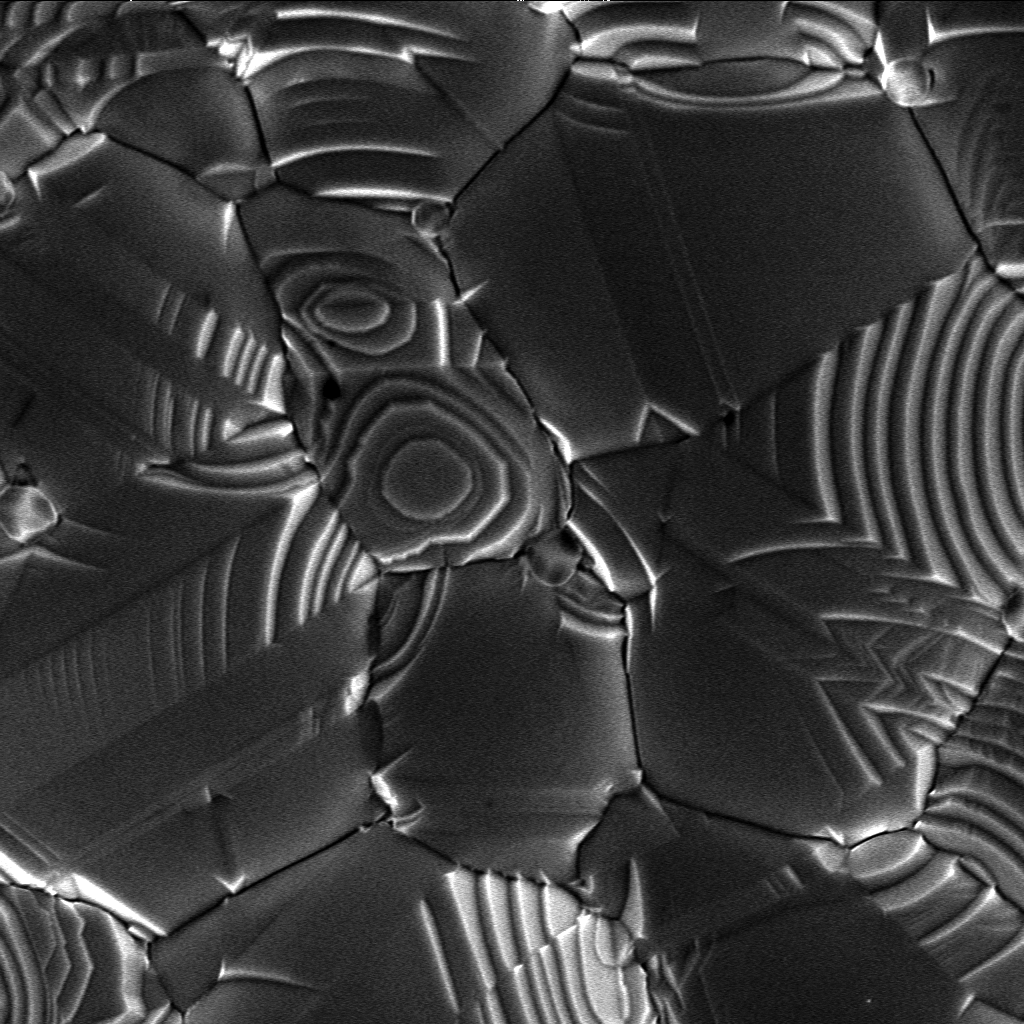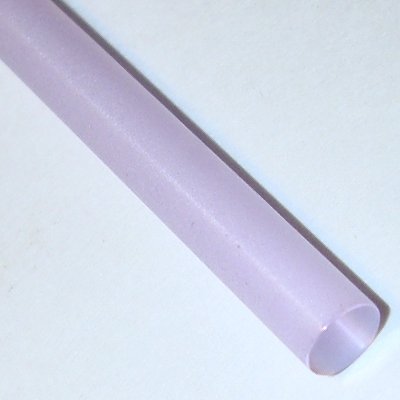|
Czochralski Process
The Czochralski method, also Czochralski technique or Czochralski process, is a method of crystal growth used to obtain single crystals (monocrystals) of semiconductors (e.g. silicon, germanium and gallium arsenide), metals (e.g. palladium, platinum, silver, gold), salts and synthetic gemstones. The method is named after Polish scientist Jan Czochralski, who invented the method in 1915 while investigating the crystallization rates of metals. He made this discovery by accident: instead of dipping his pen into his inkwell, he dipped it in molten tin, and drew a tin filament, which later proved to be a single crystal. The process remains economically important, as roughly 90% of all modern-day semiconductor devices use material derived from this method. The most important application may be the growth of large cylindrical ingots, or boules, of single crystal silicon used in the electronics industry to make semiconductor devices like integrated circuits. Other semiconductors, such ... [...More Info...] [...Related Items...] OR: [Wikipedia] [Google] [Baidu] |
Crystal Growth
Crystal growth is a major stage of a crystallization, crystallization process, and consists of the addition of new atoms, ions, or polymer strings into the characteristic arrangement of the crystalline lattice. The growth typically follows an initial stage of either homogeneous or heterogeneous (surface catalyzed) nucleation, unless a "seed" crystal, purposely added to start the growth, was already present. The action of crystal growth yields a crystalline solid whose atoms or molecules are close packed, with fixed positions in space relative to each other. The crystalline states of matter, state of matter is characterized by a distinct structural rigidity and very high resistance to Plastic deformation in solids, deformation (i.e. changes of shape and/or volume). Most crystalline solids have high values both of Young's modulus and of the shear modulus of elasticity (physics), elasticity. This contrasts with most liquids or fluids, which have a low shear modulus, and typically exh ... [...More Info...] [...Related Items...] OR: [Wikipedia] [Google] [Baidu] |
AEG (German Company)
; AEG) was a German producer of electrical equipment. It was established in 1883 by Emil Rathenau as the ''Deutsche Edison-Gesellschaft für angewandte Elektricität'' in Berlin. The company's initial focus was driven by electrical lighting, as in 1881, Rathenau had acquired the rights to the electric light bulb at the International Exposition of Electricity in Paris. Using small power stations, his company introduced electrical lighting to cafés, restaurants, and theaters, despite the high costs and limitations. By the end of the 19th century, AEG had constructed 248 power stations, providing a total of 210,000 hp of electricity for lighting, tramways, and household devices. During the World War II, Second World War, AEG worked with the Nazi Party and benefited from forced labour from concentration camps. After the war, its headquarters moved to Frankfurt am Main. In 1967, AEG joined with its subsidiary Telefunken, Telefunken AG, creating ''Allgemeine Elektricitäts-Ge ... [...More Info...] [...Related Items...] OR: [Wikipedia] [Google] [Baidu] |
Yttrium Aluminium Garnet
Yttrium aluminium garnet (YAG, Yttrium, Y3Aluminium, Al5Oxygen, O12) is a synthetic crystalline material of the garnet group. It is a Crystal system, cubic yttrium aluminium oxide phase, with other examples being YAlO3 (YAP) in a Crystal system, hexagonal or an orthorhombic, perovskite-like form, and the monoclinic Y4Al2O9 (YAM). Due to its broad optical transparency, low internal stress, high hardness, chemical and heat resistance, YAG is used for a variety of optics. Its lack of birefringence (unlike sapphire) makes it an interesting material for high-energy/high-power laser systems. Laser damage threshold, Laser damage levels of YAG ranged from 1.1 to 2.2 kJ/cm2 (1064 nm, 10 ns). YAG, like garnet and sapphire, has no uses as a laser medium when pure. However, after being doped with an appropriate ion, YAG is commonly used as a host material in various solid-state lasers. Rare earth elements such as neodymium and erbium can be doping (semiconductors), doped into ... [...More Info...] [...Related Items...] OR: [Wikipedia] [Google] [Baidu] |
Corundum
Corundum is a crystalline form of aluminium oxide () typically containing traces of iron, titanium, vanadium, and chromium. It is a rock (geology), rock-forming mineral. It is a naturally transparency and translucency, transparent material, but can have different colors depending on the presence of transition metal impurities in its crystalline structure. Corundum has two primary gemstone, gem varieties: ruby and sapphire. Rubies are red due to the presence of chromium, and sapphires exhibit a range of colors depending on what transition metal is present. A rare type of sapphire, Sapphire#Padparadscha, padparadscha sapphire, is pink-orange. The name "corundum" is derived from the Tamil language, Tamil-Dravidian languages, Dravidian word ''kurundam'' (ruby-sapphire) (appearing in Sanskrit as ''kuruvinda''). Because of corundum's hardness (pure corundum is defined to have 9.0 on the Mohs scale), it can scratch almost all other minerals. Emery (rock), Emery, a variety of corundum w ... [...More Info...] [...Related Items...] OR: [Wikipedia] [Google] [Baidu] |
Chrysoberyl
The mineral or gemstone chrysoberyl is an aluminate of beryllium with the formula Be Al2 O4. The name chrysoberyl is derived from the Greek words χρυσός ''chrysos'' and βήρυλλος ''beryllos'', meaning "a gold-white spar". Despite the similarity of their names, chrysoberyl and beryl are two completely different gemstones, although they both contain beryllium. Chrysoberyl is the third-hardest frequently encountered natural gemstone and lies at 8.5 on the Mohs scale of mineral hardness, between corundum (9) and topaz (8). An interesting feature of its crystals are the cyclic twins called ''trillings''. These twinned crystals have a hexagonal appearance, but are the result of a triplet of twins with each "twin" oriented at 120° to its neighbors and taking up 120° of the cyclic trilling. If only two of the three possible twin orientations are present, a V-shaped twin results. Ordinary chrysoberyl is yellowish-green and transparent to translucent. When the min ... [...More Info...] [...Related Items...] OR: [Wikipedia] [Google] [Baidu] |
Solar Cell
A solar cell, also known as a photovoltaic cell (PV cell), is an electronic device that converts the energy of light directly into electricity by means of the photovoltaic effect.Solar Cells chemistryexplained.com It is a type of photoelectric cell, a device whose electrical characteristics (such as Electric current, current, voltage, or Electrical resistance and conductance, resistance) vary when it is exposed to light. Individual solar cell devices are often the electrical building blocks of solar panel, photovoltaic modules, known colloquially as "solar panels". Almost all commercial PV cells consist of crystalline silicon, with a market share of 95%. Cadmium telluride thin-film solar cells account for the remainder. The common single-junction silicon solar cell can produce a maximum open-circuit voltage o ... [...More Info...] [...Related Items...] OR: [Wikipedia] [Google] [Baidu] |
Crystalline Silicon
Crystalline silicon or (c-Si) is the crystalline forms of silicon, either polycrystalline silicon (poly-Si, consisting of small crystals), or monocrystalline silicon (mono-Si, a continuous crystal). Crystalline silicon is the dominant semiconducting material used in photovoltaic technology for the production of solar cells. These cells are assembled into solar panels as part of a photovoltaic system to generate solar power from sunlight. In electronics, crystalline silicon is typically the monocrystalline form of silicon, and is used for producing microchips. This silicon contains much lower impurity levels than those required for solar cells. Production of semiconductor grade silicon involves a chemical purification to produce hyper-pure polysilicon, followed by a recrystallization process to grow monocrystalline silicon. The cylindrical boules are then cut into wafers for further processing. Solar cells made of crystalline silicon are often called ''conventional'', ... [...More Info...] [...Related Items...] OR: [Wikipedia] [Google] [Baidu] |
Photovoltaic
Photovoltaics (PV) is the conversion of light into electricity using semiconducting materials that exhibit the photovoltaic effect, a phenomenon studied in physics, photochemistry, and electrochemistry. The photovoltaic effect is commercially used for electricity generation and as photosensors. A photovoltaic system employs solar modules, each comprising a number of solar cells, which generate electrical power. PV installations may be ground-mounted, rooftop-mounted, wall-mounted or floating. The mount may be fixed or use a solar tracker to follow the sun across the sky. Photovoltaic technology helps to mitigate climate change because it emits much less carbon dioxide than fossil fuels. Solar PV has specific advantages as an energy source: once installed, its operation does not generate any pollution or any greenhouse gas emissions; it shows scalability in respect of power needs and silicon has large availability in the Earth's crust, although other materials required in ... [...More Info...] [...Related Items...] OR: [Wikipedia] [Google] [Baidu] |
Semiconductor Devices
A semiconductor device is an electronic component that relies on the electronics, electronic properties of a semiconductor material (primarily silicon, germanium, and gallium arsenide, as well as organic semiconductors) for its function. Its conductivity lies between conductors and insulators. Semiconductor devices have replaced vacuum tubes in most applications. They electrical conductivity, conduct electric current in the solid-state electronics, solid state, rather than as free electrons across a vacuum (typically liberated by thermionic emission) or as free electrons and ions through electric discharge in gases, an ionized gas. Semiconductor devices are manufactured both as single discrete devices and as integrated circuit (IC) chips, which consist of two or more devices—which can number from the hundreds to the billions—manufactured and interconnected on a single semiconductor wafer (electronics), wafer (also called a substrate). Semiconductor materials are useful beca ... [...More Info...] [...Related Items...] OR: [Wikipedia] [Google] [Baidu] |
Integrated Circuits
An integrated circuit (IC), also known as a microchip or simply chip, is a set of electronic circuits, consisting of various electronic components (such as transistors, resistors, and capacitors) and their interconnections. These components are etched onto a small, flat piece ("chip") of semiconductor material, usually silicon. Integrated circuits are used in a wide range of electronic devices, including computers, smartphones, and televisions, to perform various functions such as processing and storing information. They have greatly impacted the field of electronics by enabling device miniaturization and enhanced functionality. Integrated circuits are orders of magnitude smaller, faster, and less expensive than those constructed of discrete components, allowing a large transistor count. The IC's mass production capability, reliability, and building-block approach to integrated circuit design have ensured the rapid adoption of standardized ICs in place of designs using discre ... [...More Info...] [...Related Items...] OR: [Wikipedia] [Google] [Baidu] |
Gordon Kidd Teal
Gordon Kidd Teal (January 10, 1907 – January 7, 2003) was an American engineer. He invented a method of applying the Czochralski method to produce extremely pure germanium single crystals used in making greatly improved transistors.Gordon Kidd Teal Papers #3820, The Texas Collection. He, together with Morgan Sparks, invented a modification of the process that produced the configuration necessary for the fabrication of bipolar junction transistors. He is most remembered for developing the fi ... [...More Info...] [...Related Items...] OR: [Wikipedia] [Google] [Baidu] |






